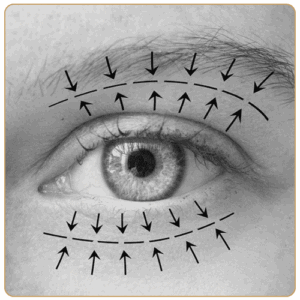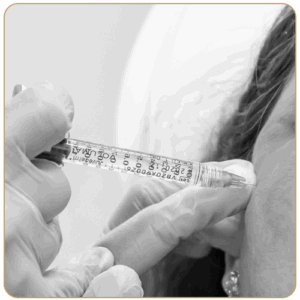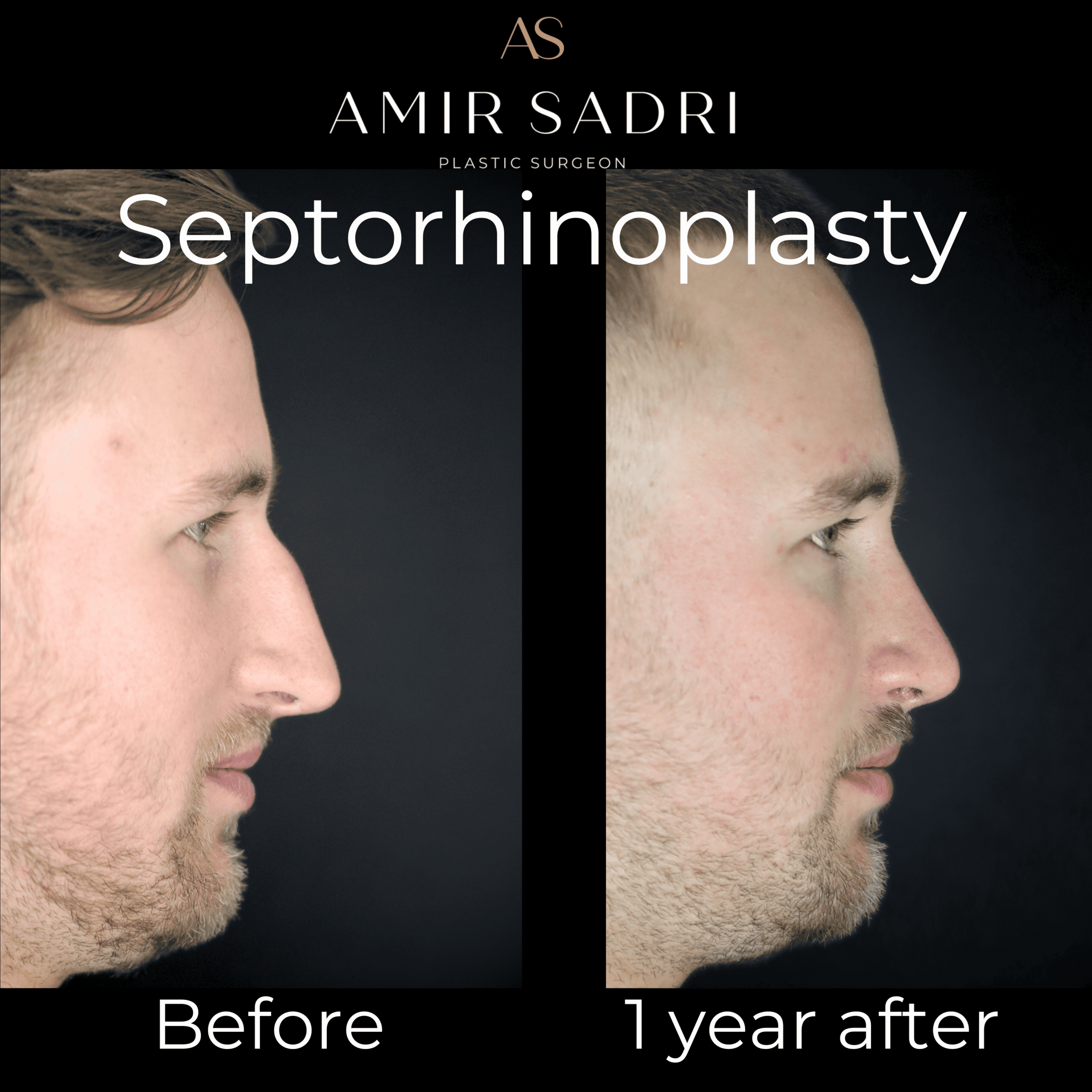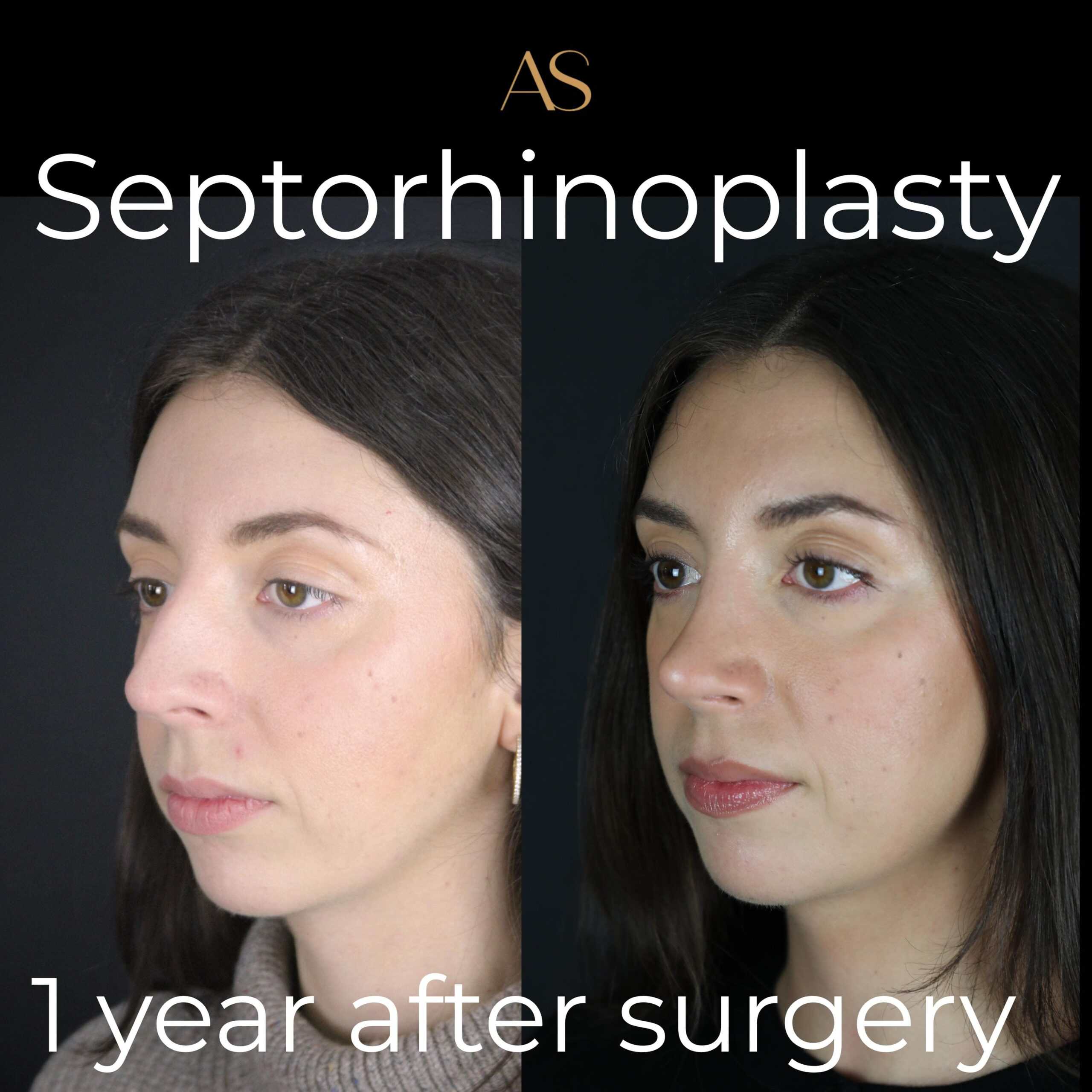Septoplasty
Septoplasty
A septoplasty is a surgical procedure to correct a deviated septum, the partition between the two nostrils in the nose. When the septum is significantly displaced or crooked, it can obstruct the nasal passages and impede proper airflow, causing various breathing difficulties.

Benefits septoplasty surgery
In some individuals, the septum is crooked or deviated, which can cause various problems and may require surgical intervention. Here are some common reasons why people have septoplasty surgery: Here are some of the advantages:
Improved Breathing
One of the primary benefits of septoplasty is improved airflow and easier breathing. By straightening the deviated septum, septoplasty helps to open up the nasal passages, allowing for better airflow through the nostrils. This can relieve chronic nasal congestion, reduce snoring, and improve overall breathing function.
Reduced nasal symptoms
Septoplasty can alleviate or minimize various nasal symptoms associated with a deviated septum, such as nasal obstruction, congestion, and post-nasal drip. By correcting the underlying structural issue, septoplasty can provide relief from these symptoms, leading to improved comfort and quality of life.
Decreased sinus infections
A deviated septum can disrupt the normal drainage of the sinuses, making individuals more prone to recurrent sinus infections. Septoplasty helps to restore proper sinus drainage by aligning the septum, thereby reducing the frequency and severity of sinus infections.
Alleviation of facial pain
Facial pain, pressure, and headaches can be caused or worsened by a deviated septum. By correcting the septal deviation, septoplasty can relieve these symptoms, improving overall facial comfort and reducing the frequency or intensity of headaches.
Enhanced sleep quality
Septoplasty can have a positive impact on sleep quality, especially for individuals with breathing difficulties or sleep apnea caused by a deviated septum. By improving nasal airflow, septoplasty can reduce snoring, alleviate sleep apnea symptoms, and promote better sleep patterns.
Improvement in nasal conditions
In some cases, septoplasty may lead to improvement in other nasal conditions, such as chronic rhinitis or nasal polyps. By restoring normal nasal anatomy, septoplasty can create a more favourable environment for managing these conditions.
Preparation for other nasal surgeries
Septoplasty may be performed as a preliminary procedure before other nasal surgeries, such as rhinoplasty (cosmetic nose surgery). By addressing the deviated septum, septoplasty creates a stable foundation for subsequent procedures, optimizing the outcomes of cosmetic or reconstructive nasal surgery.
Online Consulting
Arrange a 15-minute call to discuss our treatments and services.
Before & After Gallery
What happens during Septoplasty Surgery
The duration of the septoplasty procedure can vary depending on the complexity of the individual case. Typically, it takes about one to two hours to complete the surgery.
During a septoplasty surgery, the following general steps are involved:
Anaesthesia
The patient is given anesthesia to ensure they are comfortable and free of pain during the procedure. This can be either local anesthesia with sedation or general anesthesia, depending on the surgeon’s recommendation and the patient’s specific needs.
Incision and access
The surgeon makes an incision on one side of the nose, typically within the nostril, to access the septum. In some cases, a small external incision may be made at the base of the nose, but this is less common.
Septal repositioning
The deviated or crooked portions of the septum are carefully lifted and repositioned to a more central position. We may use various techniques such as cutting, reshaping, or removing excess cartilage or bone to achieve the desired result.
Nasal packing or splints
In some cases, the surgeon may place dissolvable packing materials or splints inside the nose to support the septum and prevent excessive bleeding. These packing materials or splints may be removed within a few days after the surgery.
Closure and recovery
The incisions are closed with absorbable stitches or sutures, and the nasal tissues are gently repositioned into their normal position. We may place a nasal splint or cast on the outside of the nose to provide support and protect the area during the initial healing phase.
Post-operative care
After the surgery, the patient is moved to a recovery area where they are monitored closely. Pain medication, antibiotics, and nasal sprays may be prescribed to manage discomfort, prevent infection, and aid in healing. The surgeon will provide specific instructions on how to care for the nose, including how to clean the area and manage any post-operative bleeding or discharge.
Rhinoplasty Surgeon London
A professional, qualified and experienced plastic surgeon should perform a rhinoplasty because it is a complex surgical procedure that requires a high level of skill and expertise. A plastic surgeon who specializes in rhinoplasty has extensive knowledge of nasal anatomy and understands the complex relationships between the various structures of the nose, such as the bone, cartilage, and tissue.
A professional surgeon can also assess a patient’s individual needs and goals, and provide personalized recommendations for the procedure that will achieve the desired outcome. They can also ensure that the patient has realistic expectations about the procedure and can explain the potential risks and benefits involved.
In addition, a professional surgeon will have access to the latest surgical techniques and technologies, and can tailor the procedure to the patient’s specific needs and desired outcome. They can also provide ongoing support and care during the recovery process.
Overall, it’s important to choose a qualified and experienced plastic surgeon to perform a rhinoplasty to ensure the best possible outcome and reduce the risk of complications.
Dr Amir Sadri – Specialist Rhinoplasty Surgeon

Dr Amir Sadir is a specialist rhinoplasty surgeon based in London. He is widely published with over 40 peer-reviewed papers on an extensive range of plastic, reconstructive, and cosmetic surgery. He has presented work internationally in Europe and the USA.
He is a Consultant Plastic Surgeon at Great Ormond Street Hospital. This involves the reconstruction of children with cleft lip and palate and vascular anomalies. In addition, he also owns his own private clinic and his cosmetic practice includes all aspects of aesthetic surgery, but his particular interest is in rhinoplasty and facial aesthetic surgery.
Septoplasty Recovery
Recovery time varies from person to person, but most individuals can expect to resume normal activities within a week or two after the procedure. Full recovery may take several weeks, during which the patient should follow the surgeon’s post-operative care instructions for optimal healing.
The recovery and aftercare following a septoplasty surgery are crucial for proper healing and optimal outcomes. Here are some general guidelines for septoplasty recovery and aftercare:
Rest and recovery
It’s important to rest and take it easy for the first few days after the surgery. Plan to take time off from work or school to allow your body to heal. Avoid strenuous activities, heavy lifting, and vigorous exercise during the initial recovery period.
Pain management
It is normal to experience some pain, swelling, and discomfort after septoplasty. Your surgeon may prescribe pain medications to manage any discomfort. Follow the prescribed dosage and instructions carefully. Applying cold compresses or ice packs to the nose and face can help reduce swelling and relieve pain.
Nasal care
Keep your nose clean and follow the specific instructions provided by your surgeon. Use saline nasal sprays or rinses as recommended to keep the nasal passages moist and help with healing. Avoid blowing your nose forcefully for the first week or as advised by your surgeon.
Nasal packing or splints
If your surgeon placed nasal packing or splints, they will provide instructions on when and how to remove them. This is typically done within a few days after the surgery. Follow their guidelines carefully to ensure proper healing.
Sleeping position
Sleeping with your head elevated on pillows can help reduce swelling and promote drainage. Try to sleep on your back rather than on your side or stomach during the initial healing phase.
Follow-up appointments
Attend all scheduled follow-up appointments with your surgeon. They will examine your progress, remove any packing or splints if necessary, and provide further instructions for your recovery.
Avoid certain activities and substances
During the recovery period, avoid activities that may put stress on your nasal area, such as contact sports or activities that involve risk of injury to the nose. It’s also important to avoid smoking and exposure to secondhand smoke, as they can impair healing and increase the risk of complications.
Be patient
Full recovery from septoplasty can take several weeks. It’s important to be patient and give your body the time it needs to heal. Follow your surgeon’s instructions, maintain a healthy lifestyle, and communicate any concerns or unusual symptoms to your medical provider.
Remember that these guidelines are general, and your surgeon may provide specific instructions tailored to your individual case. It’s essential to follow their advice for the best results. If you have any questions or concerns during your recovery, don’t hesitate to reach out to your surgeon or healthcare provider.
Online Consulting
Arrange a 15-minute call to discuss our treatments and services.











